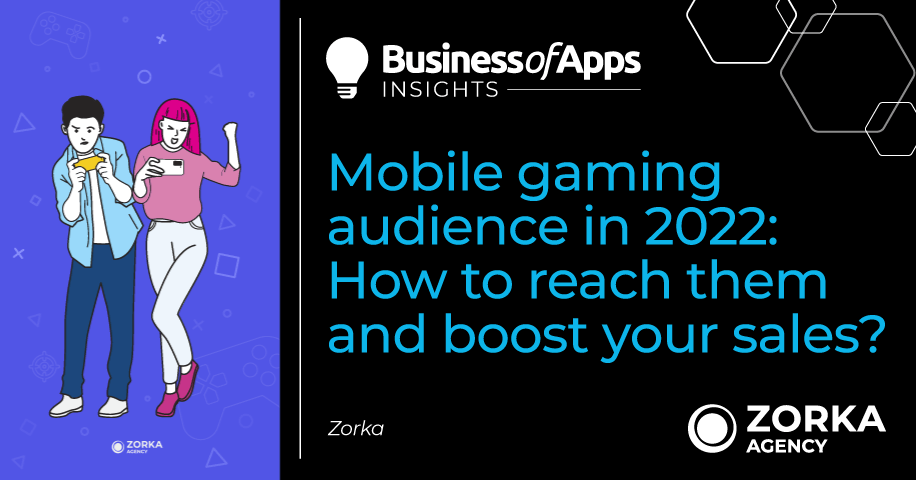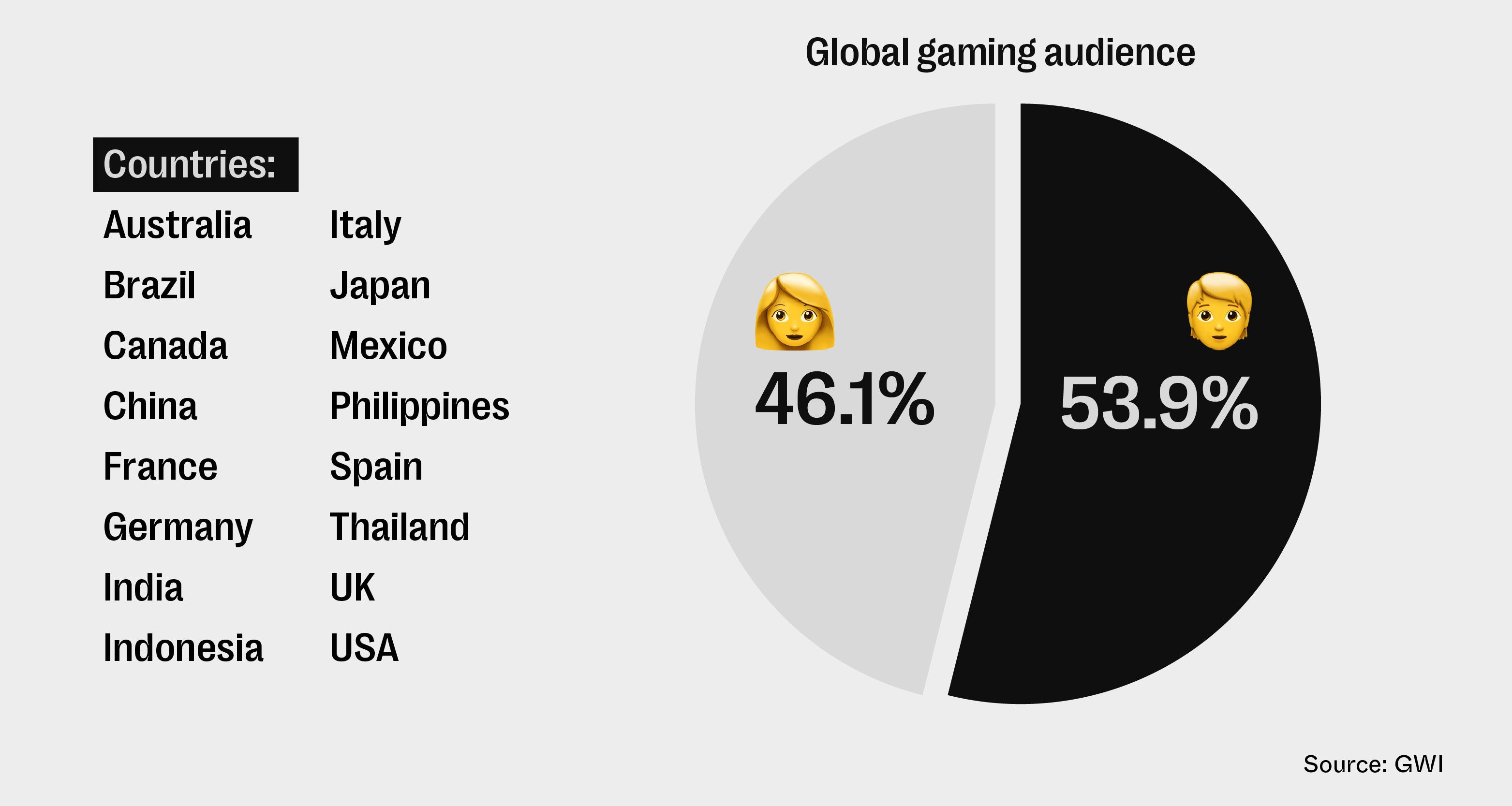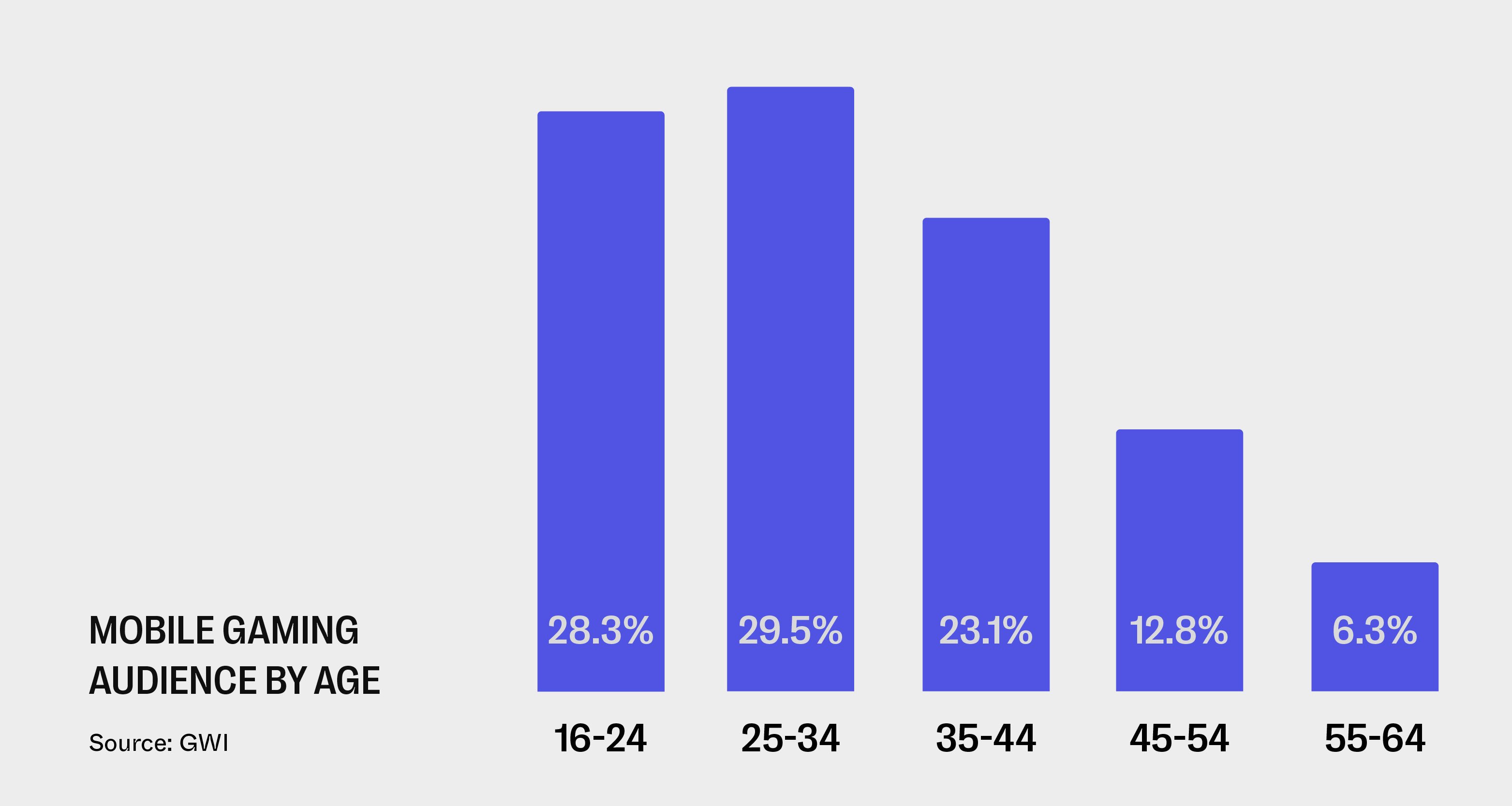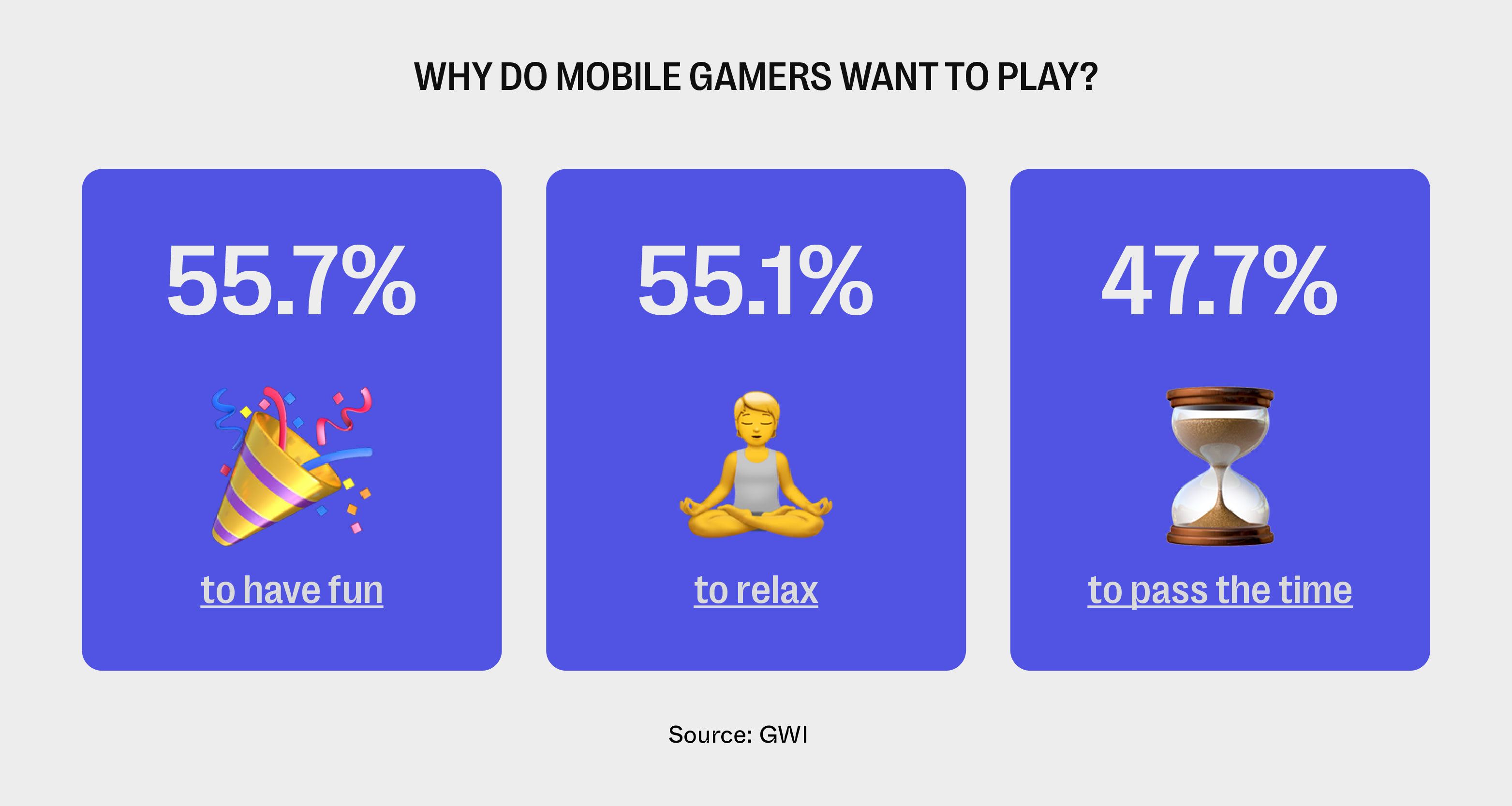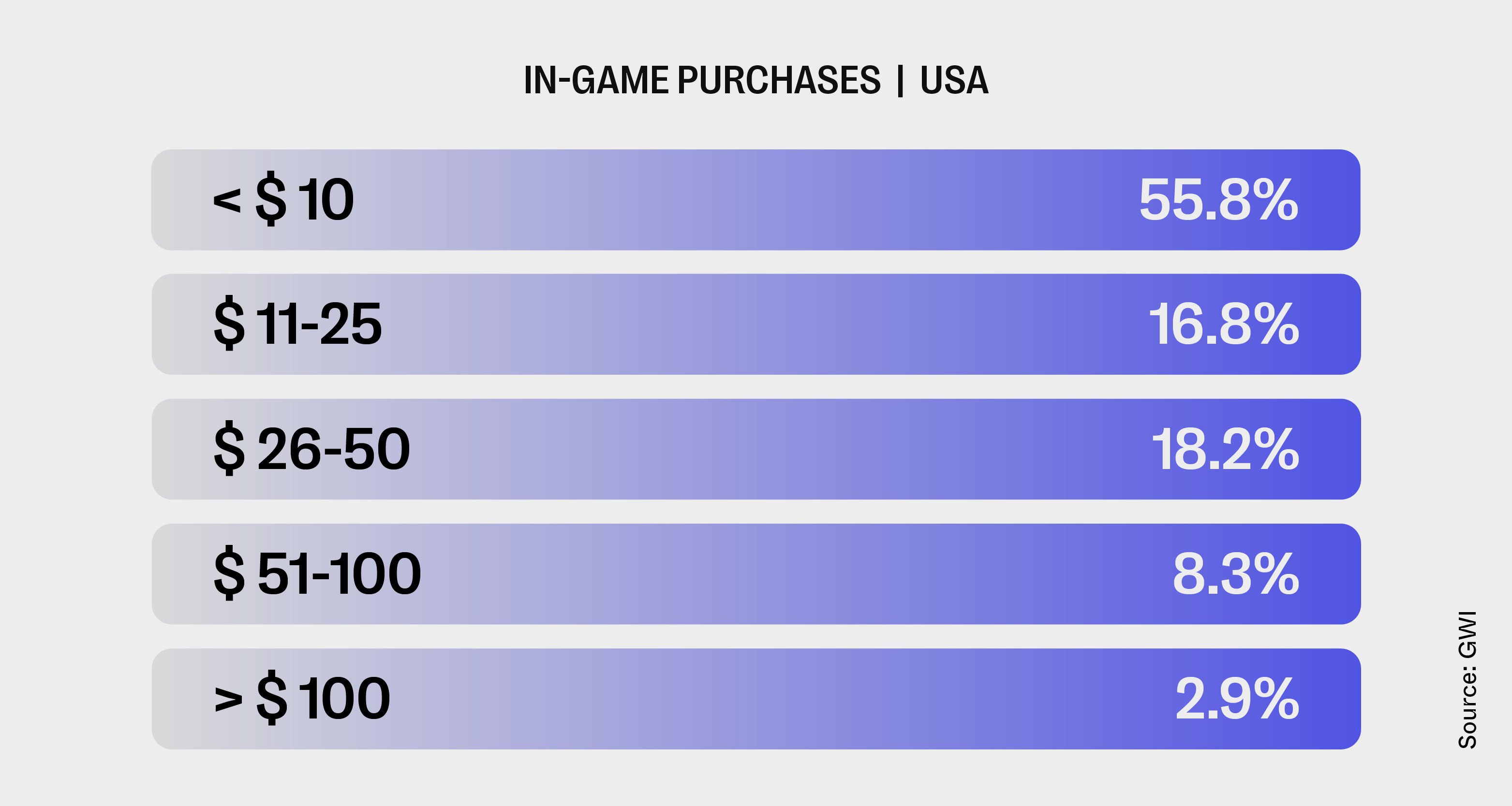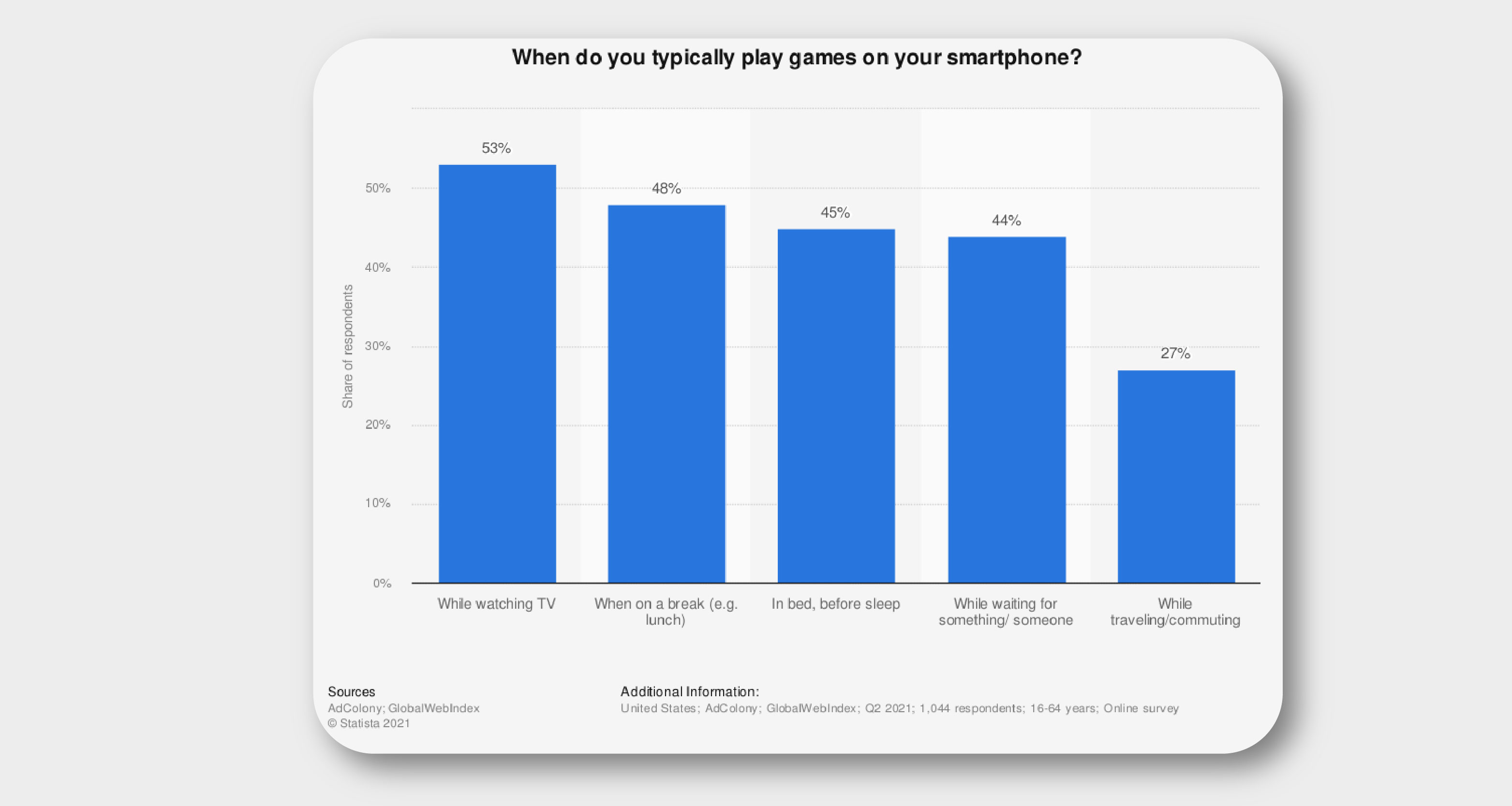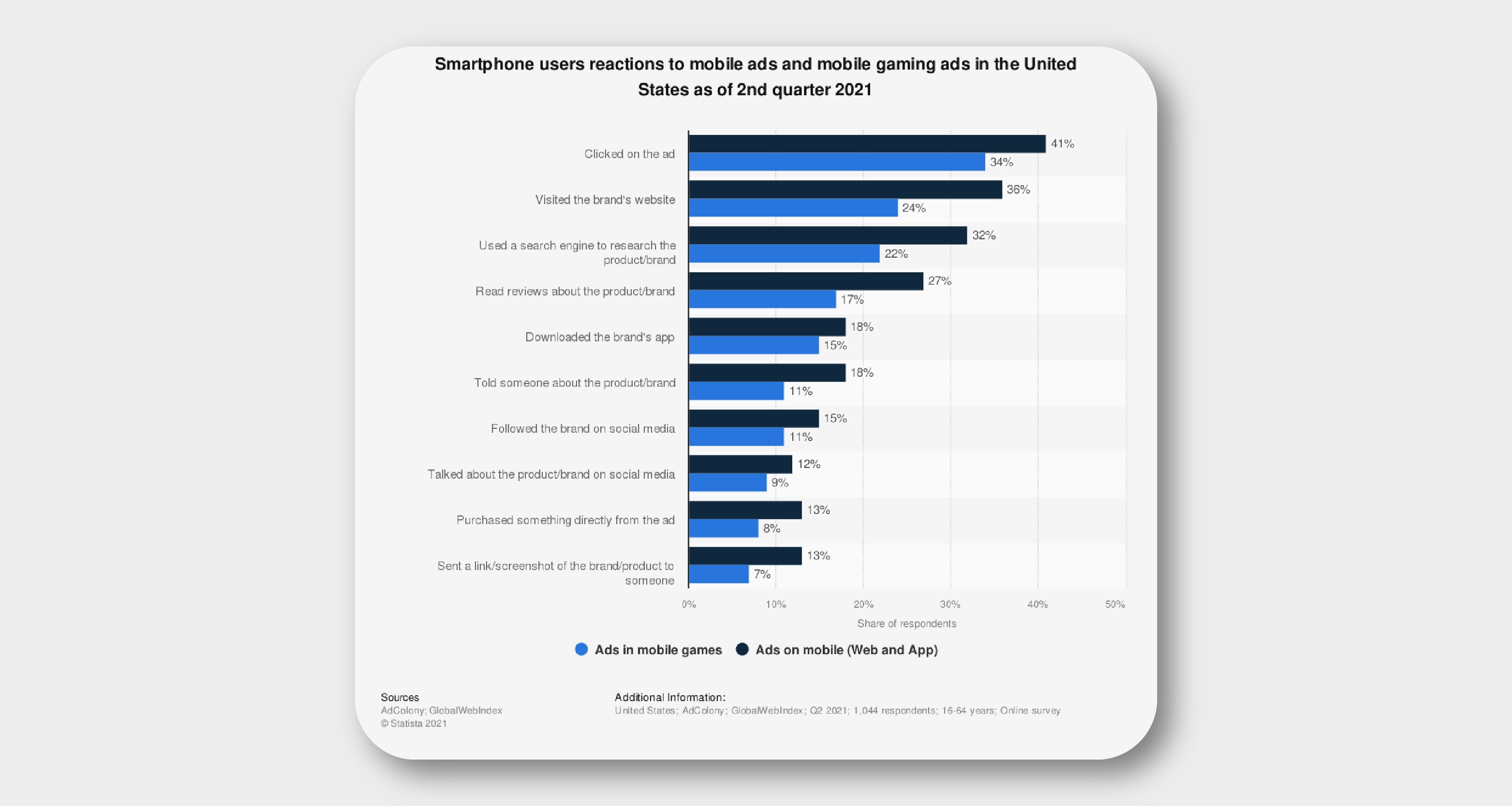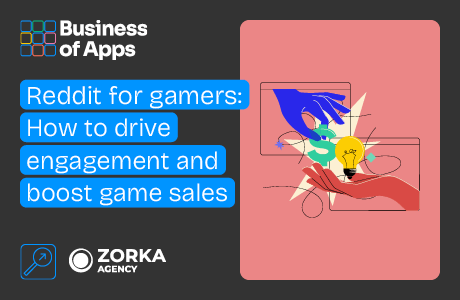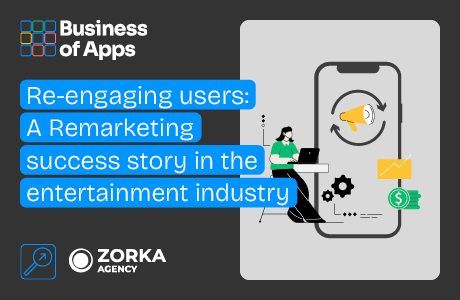In Zorka.Agency, we believe that understanding the motives of an audience is the key to achieving any business goal. When it comes to the mobile gaming audience, knowing why people play will help create the most effective marketing campaigns.
Today’s article offers the latest stats on mobile gaming audiences: who they are, when and why they play mobile games. We’ll also share some recommendations on how app developers and marketers could best reach this audience.
Who plays mobile games?
There are 3.9 billion mobile users worldwide (Newzoo). According to GWI, 100% of respondents confirmed that they use mobile devices for games. So potentially every smartphone user today plays mobile games.
53.6% of mobile game players are men and 46.4% are women. Although the percentage of female players has obviously increased, it is essential to note that children are included in the stats as female users, since the statistics are counted by devices, and kids often use those of their mothers.
Global gaming audience
Source: Zorka.Agency
The global audience of smartphone users is distributed as follows:
- China – 32.8%
- India – 23.1%
- United States – 7.9%
- Europe (Germany, France, UK, Italy and Spain) – 6.9%
- Canada – 0.9%
- Australia – 0.5%
Literally, everyone at any age plays games on smartphones. The most playing audiences are people around 25-34 years old – 29.5%, youngsters of 16-24 years old – 28.3%, and 35-44 years old – 23.1% of the entire mobile gaming audience.
Mobile gaming audience by age
Source: Zorka.Agency
Thus, the portrait of mobile gamers goes beyond the stereotypical image of a “playing geek”. Women and people aged 60+ also play mobile games, and the percentage of Gen Z representatives in the gaming audience is growing.
Why do people play games?
Mobile games, along with social networks, are the main daily source of entertainment and escape into virtual reality that people use mechanically to experience a range of emotions and maintain social connections. The main reasons why users play mobile games are:
- for fun – 55.7%
- to relax/unwind – 55.1%
- to pass the time – 47.7%
Thus, for modern society people, mobile games are mostly instruments for social escape and time-killers.
Your playbook for the new app ecosystem [webinar]
The app stores have been cracked open. Savvy teams are already capitalizing by implementing App2Web and Web2App strategies. Join Paddle’s Lucas Lovell to discover smarter billing tactics.
Register nowReasons to play
Source: Zorka.Agency
People also play to create social connections: 45.3% think games are a great way to make friends. On top of that, some users play games online in order to maintain social connections they already have:
- 35.9% – play with friends online
- 22.5% – play with colleagues
- 19.9% – play with their families
- 19.7% – play with siblings online
People get used to playing mobile games through socialization: 25.5% of respondents had experience playing with friends or family offline.
The trend of playing to avoid social connections is less evident: only 23% play to escape reality. On top of that:
- 47,0% – prefer to play online on their own
- 31,7% – prefer to play offline on their own
How much do people spend in mobile games?
The mobile gaming audience is engaged and ready to pay: players spent $190 billion in mobile games in 2021.
The average check for in-app purchases varies between $10-100. More frequent in-app purchases do not exceed $10. In the US, for instance, this figure is 55.8% of all players.
People aged 45-54 account for 63.3% of in-app purchases up to $10, while those aged 55-64 buy 77.8%. That is, the smallest audience is the most paying and engaged one.
In-game purchases
Source: Zorka.Agency
As for Gen Z purchasing behavior: 62% of children under 13 had already purchased paid games, and over 40% of parents said that in-app purchases make up to $10 per month (FinancesOnline).
Why should the mobile gaming audience be part of your marketing strategy?
The mobile gaming audience is the largest and most diverse audience of paying users in the world, making them extremely attractive to advertisers. Among 3.9 billion men, women and children anywhere in the world, an advertiser will be able to find a target audience for their product without fail.
Mobile gaming audience can be used to promote game dev products, and can also be a source for promoting products from any other business industries: e-commerce, fintech, edutech, entertainment, food and drinks, and others.
We will further look into how loyal the audience is to advertising and discover the ways to reach users.
How to reach mobile gaming audiences
The most affinitive channels for reaching gamers are in-game ads (in our case in-app advertising), and ads on social networks, where the gaming community is active. Each option has its own downsides.
When running in-app ads, marketers are faced with the challenge of attracting the audience’s attention to the ad and stimulating people to perform the target action.
Unlike PC, VR headsets or any other devices, mobile games are always a “second screen” for the user:
- 53% play while watching TV/series (AdColony).
- 48% play during a lunch break (AdColony).
- More than 50% of gamers play while in the bathroom (Mediakix).
When do people play mobile games?
Source: AdColony
Thus, players pay less attention to any in-game advertising. Nevertheless, they are loyal to advertising:
- 50% of gamers prefer rewarded video ads to paid and freemium mobile ads (Tapjoy).
- 32% of players find rewarded video ads useful, 27% find them interesting, and 12% think they are enjoyable (Facebook Audience Network).
- 25.6% watch an ad in exchange for an in-game reward (GWI)
- In-game rewarded video ads generate 40% of revenue. (BusinessofApps).
34% of the American mobile gaming audience clicks on in-game ads, which confirms the trend. In-game ads are remembered well and they contribute to product brand awareness since 24% of mobile gamers go to the brand’s website after they have played a game, while 22% google the name of the product being advertised.
All in-game ads metrics are on average 5-7% lower than those of other types of placements. That is, gamers are more involved in the game process and can be annoyed by an irrelevant offer. In-game advertising placements should therefore be as native and professional as possible, so as not to cause a negative perception of the brand.
Reactions to mobile ads
Source: AdColony
In order to reach more users inside the game, it’s good for marketers to use creatives in ads. Creative ad formats are more memorable and can demonstrate the values of the advertised brand in a native way. For example, when it comes to promoting a game dev product, try using the following strategies in your creatives:
- demonstrate game progression
- show gameplay variability
- focus on super-action effects
- leverage humor
Besides in-app advertising placements, mobile gaming audiences are active on social networks.
About 63.5% of gamers use social networks to keep up with the news. On top of that:
- 21.7% post on social media about gaming experiences
- 23.5% are active in online chats and communities
- 11.4 % blog or vlog about the games they play
People mainly find out about games and novelties through the world-of-mouth:
- 44.1% learn about games from friends online
- 41% learn about games from friends offline
- 36.6% recommended games to friends
Game dev influencers are also very popular among the gaming community: they review games and industry novelties, stream the game process, etc.
Where to search for a mobile gamers audience?
Gamedev influencers have the largest audience on platforms like YouTube, Instagram, TikTok, Twitch, Snapchat, etc.
Here are some interesting statistics:
- 29.7% watch gaming streaming on Twitch or YouTube (such as Markiplier, VanossGaming or Jackseptic) (GWI).
- More than 100 billion hours were spent watching YouTube gaming in 2021 (WashingtonPost).
- 12.4% livestream own games to Twitch or other streaming platforms (GWI).
- 68% claim they use Twitch as their preferred method of streaming live sports (SocialPubli).
- YouTube consumers spent $3 billion during live streaming in 2021 (AppAnnie).
Users are burning out on too many single-type ads on social media. People rewind and ignore even bloggers’ advertising integrations, which makes out-of-the-box and creative solutions even more critical.
An elegant solution that both reaches mobile gamers on social media and creates a memorable advertising integration is to launch creative projects with game dev influencers’ audiences. More information on the challenges and advantages of reaching gamers’ audiences with the help of influencer marketing can be found in this article.
Conclusion
- The mobile gaming audience is the largest one in the world (with 3.9 billion users), both men and women play games on smartphones, literally everyone at any age, including children and people aged 60+. People play games worldwide: in China, India, the USA, Europe, Canada and Australia.
- Importantly, mobile players are a paying audience, spending $190 billion yearly combined.
- Thus, marketers and app developers should not neglect this audience when promoting their brands and products.
- At the same time, the mobile gaming audience is picky, which creates the need for out-of-the-box solutions.



